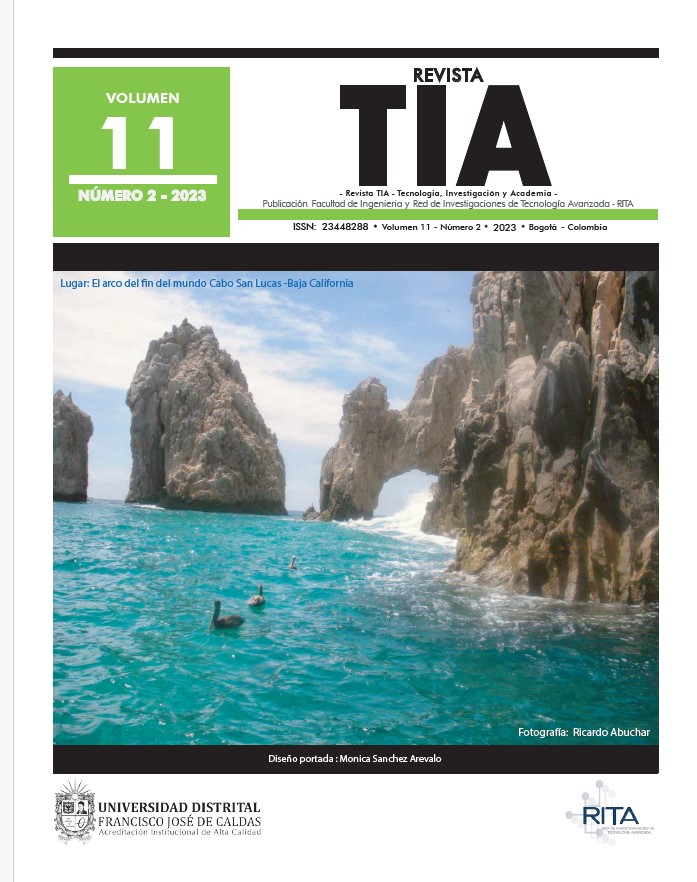Published:
2024-04-20Issue:
Vol. 11 No. 2 (2023): Agosto-diciembreSection:
InvestigaciónConsideraciones Prácticas sobre la Linealización de Modelos y su Simulación Respecto al Sistema No Lineal Original
Practical Considerations on Model Linearization and its Simulation with Respect to the Original Nonlinear System
Practical Considerations on Model Linearization and its Simulation with Respect to the Original Nonlinear System
Keywords:
linearization, Nonlinear systems, Simulation, Incremental variables (en).Keywords:
linealización, sistemas no lineales, simulación, variables incrementales (es).Downloads
Abstract (es)
Con este artículo se busca aclarar algunas consideraciones prácticas que se deben tener en cuenta a la hora de obtener aproximaciones lineales de sistemas no lineales en las vecindades de puntos de operación. En particular, busca aclarar cómo se llega a las expresiones clásicas en variables de estado desde la aproximación por serie de Taylor y cómo obtener la simulación adecuada de una aproximación lineal, que realmente evidencie comportamientos similares al sistema no lineal. Se ejemplifica la teoría presentada con un sistema de nivel de líquido de cuatro tanques, presentando su linealización y la comparación del comportamiento de los sistemas tanto lineal como no lineal, en la vecindad del punto de operación.
Abstract (en)
This article seeks to clarify some practical considerations to take into account when obtaining linear approximations form nonlinear systems in the neighborhood of the operation points. Particularly, we clarify how to get the classical expressions in state-space from the Taylor series of a function, and how to get an adequate simulation of the linear approximation that resembles the behavior of the nonlinear system. We give a numerical example with the quadruple-tank system, presenting its linearization and the comparison of the dynamical behavior of the nonlinear system with the linear approximation in the neighborhood of the operation point.
References
Bernal Romero, J. C. y Rodríguez Guzmán, H. E. (2018). Diseño y simulación de controladores multivariables para el sistema de los cuatro tanques de Johansson y estudio del comportamiento del sistema en lazo cerrado a ataques Ciber-Físicos. Tesis de Pregrado. Universidad Distrital “Francisco José de Caldas”.
Close, C., Frederick, D., y Newell, J. (2001). Modeling and Analysis of Dynamic Systems. Wiley.
D’Azzo, J. y Houpis, C. (1995). Linear Control System Analysis and Design: Conventional and Modern. Control engineering. McGraw-Hill.
Isidori, A., Thoma, M., Sontag, E. D., Dickinson, B. W., Fettweis, A., Massey, J. L., y Modestino, J. W. (1995). Nonlinear Control Systems (3rd ed.). Springer-Verlag.
Johansson, K. H. (2000). The quadruple-tank process: a multivariable laboratory process with an adjustable zero. IEEE Transactions on Control Systems Technology, pages 456–465.
Khalil, H. (2014). Nonlinear Control. Always Learning. Pearson.
Khalil, H. K. (2002). Nonlinear systems (3rd ed.). Prentice-Hall.
Kuo, B. y Golnaraghi, F. (2003). Automatic control systems (10th ed.). John Wiley Sons.
Nise, N. (2011). Control Systems Engineering (6th ed.). John Wiley & Sons, Incorporated.
Ogata, K. (2001). Modern Control Engineering (4th ed.). Prentice Hall PTR.
Phillips, C. L. and Harbor, R. D. (1999). Feedback control systems (4th ed.). Prentice-Hall, Inc.
Sastry, S. (1999). Nonlinear Systems: Analysis, Stability, and Control. Interdisciplinary Applied Mathematics. Springer.
Slotine, J. and Li, W. (1991). Applied Nonlinear Control. Prentice Hall.
Vidyasagar, M. (1993). Nonlinear systems analysis (2nd ed.). Prentice-Hall, Inc.
How to Cite
APA
ACM
ACS
ABNT
Chicago
Harvard
IEEE
MLA
Turabian
Vancouver
Download Citation
Visitas
Downloads
License
Copyright (c) 2024 Tecnología Investigación y Academia

This work is licensed under a Creative Commons Attribution-NonCommercial-ShareAlike 4.0 International License.
Reconocimiento – NoComercial – CompartirIgual (by-nc-sa): No se permite el uso comercial de la obra original, las obras derivadas deben circular con las mismas condiciones de esta licencia realizando la correcta atribución al autor.
Esta obra está bajo una licencia de Creative Commons Reconocimiento-NoComercial-CompartirIgual 4.0 Internacional




